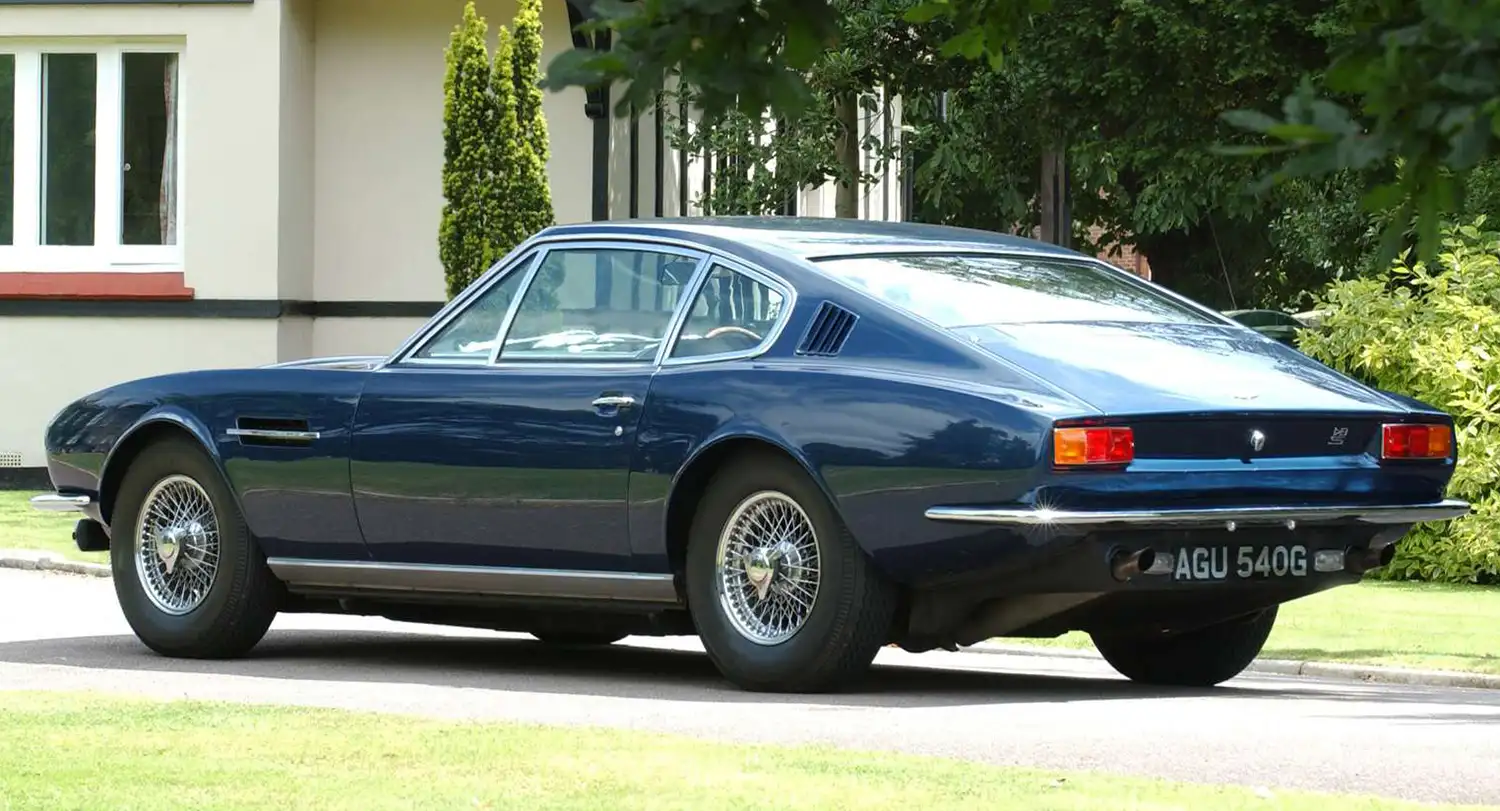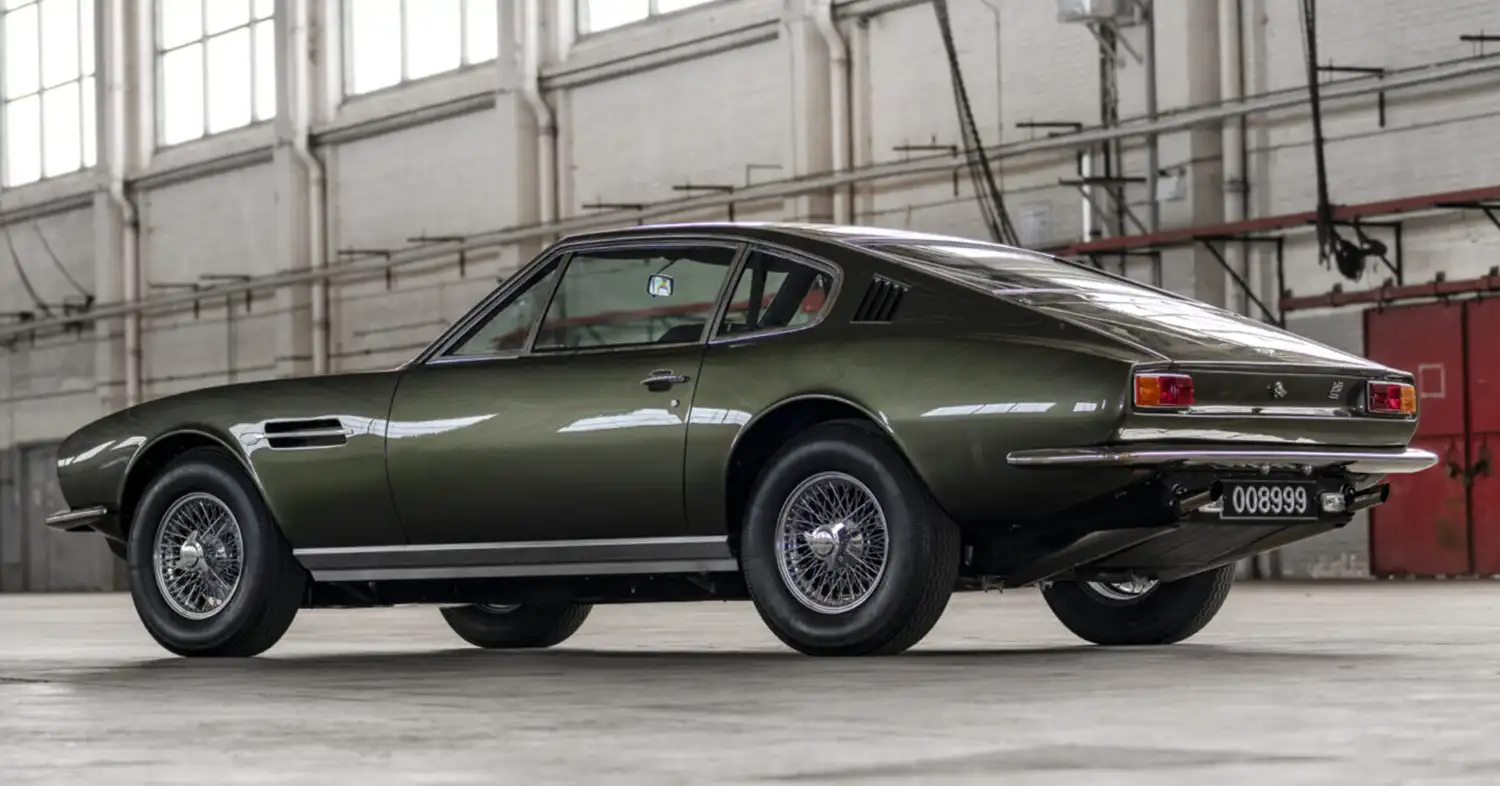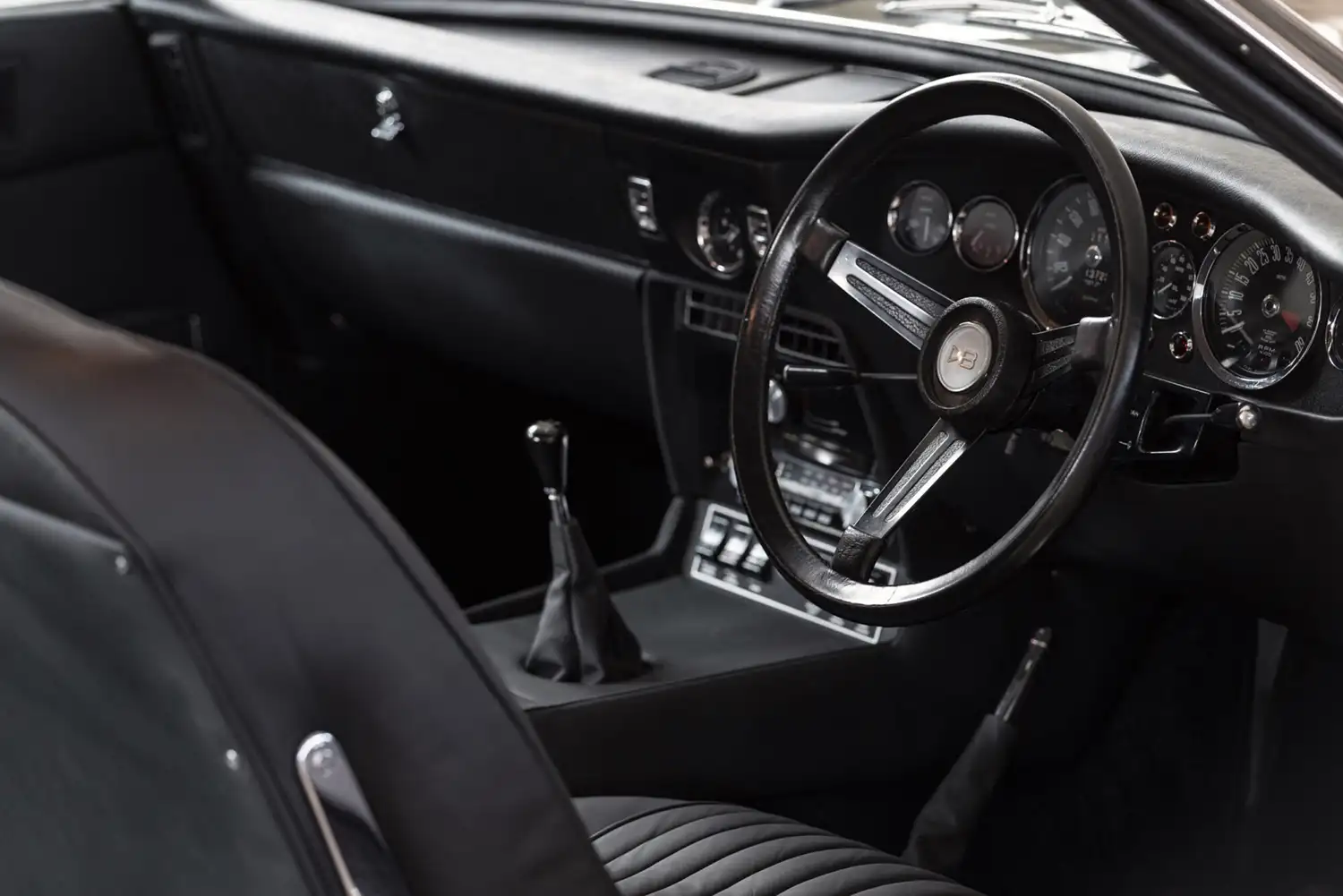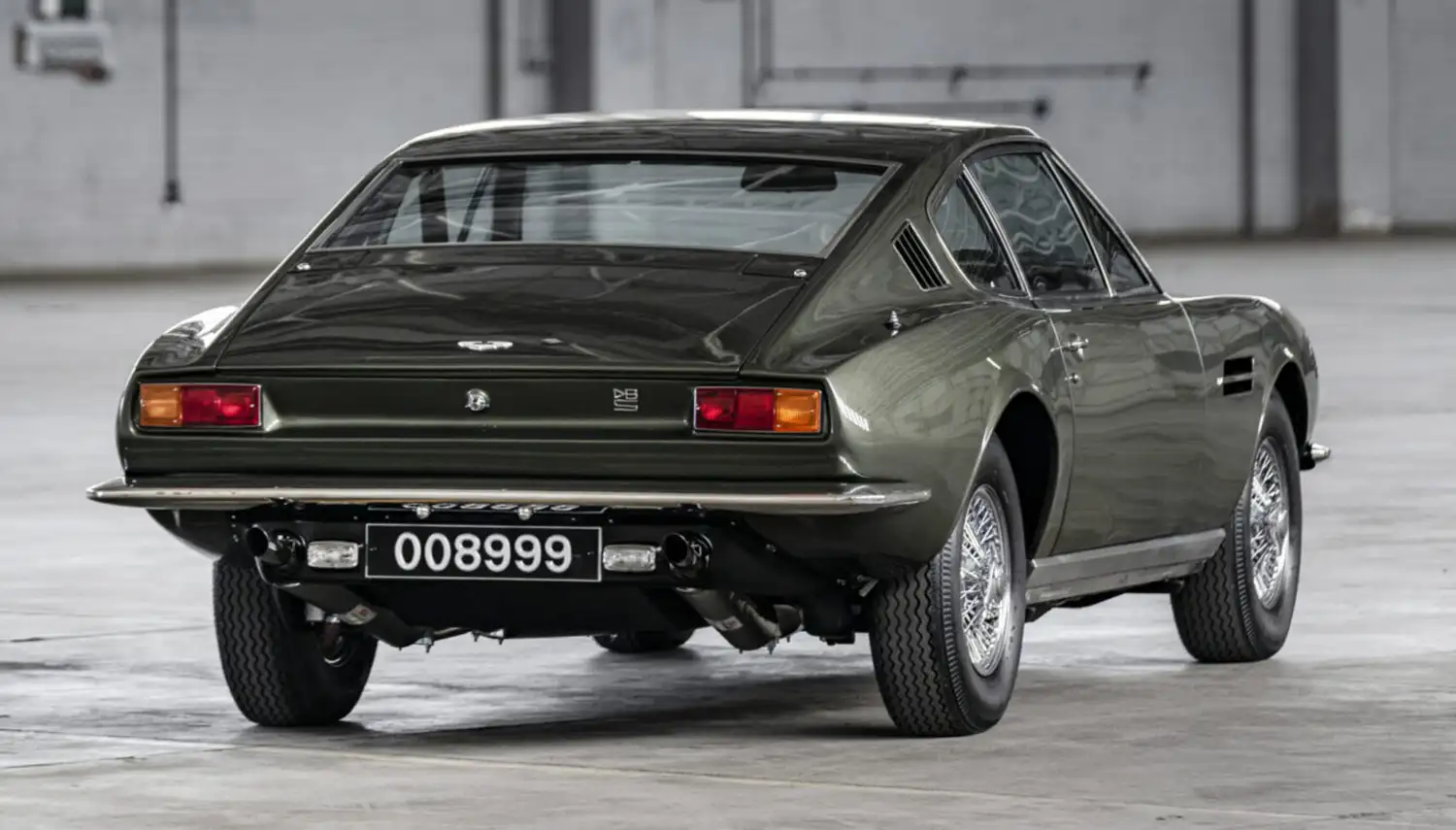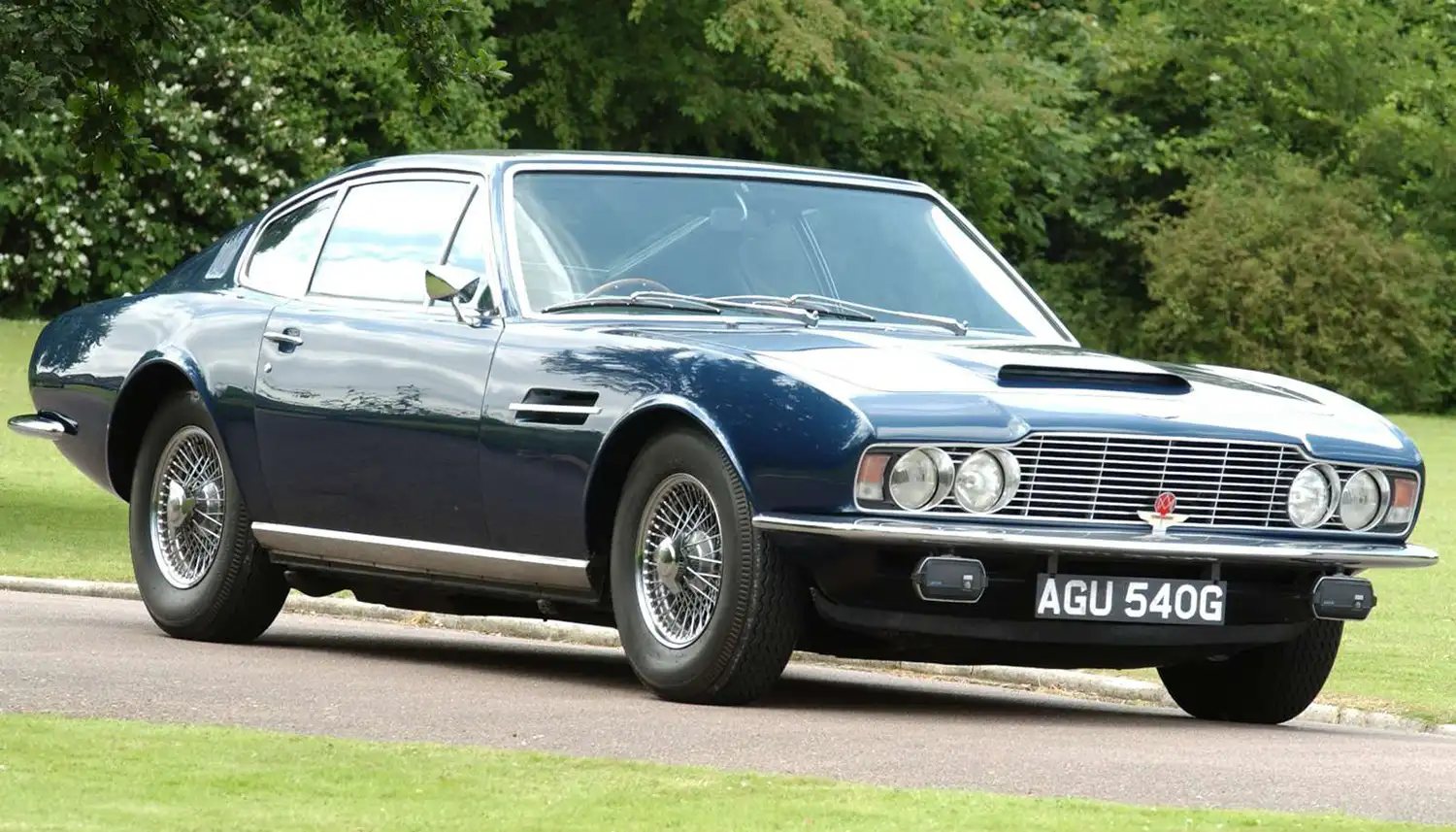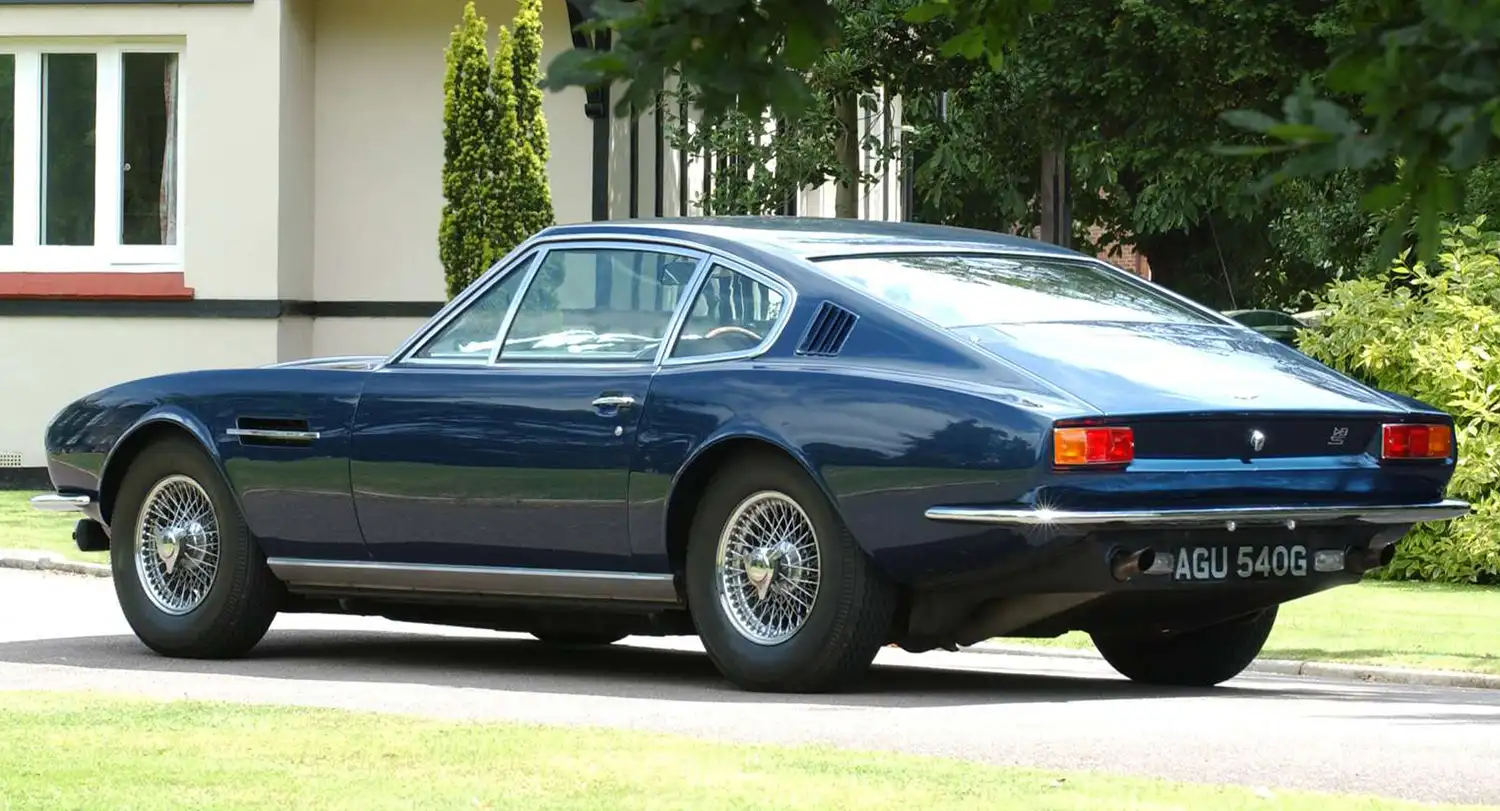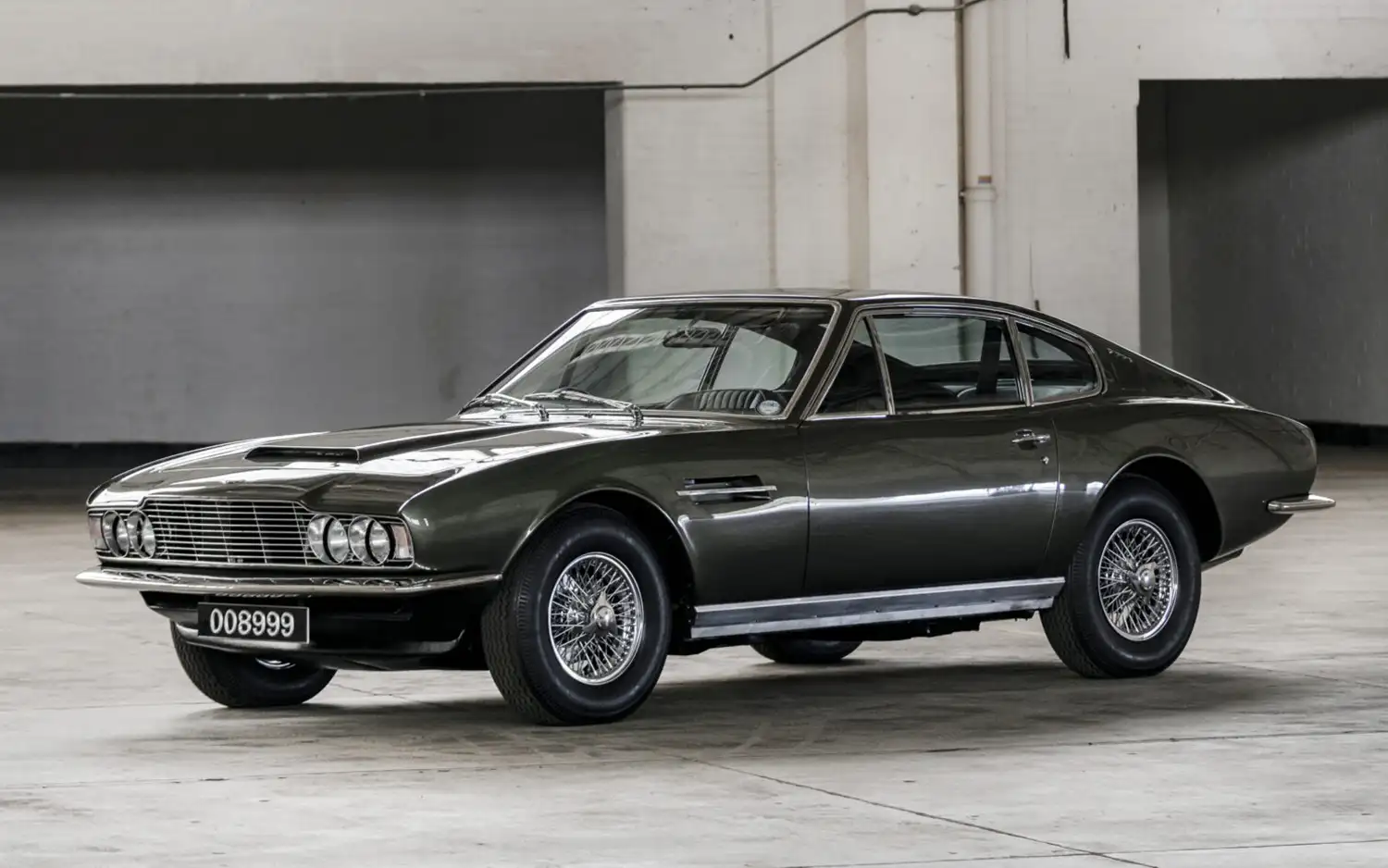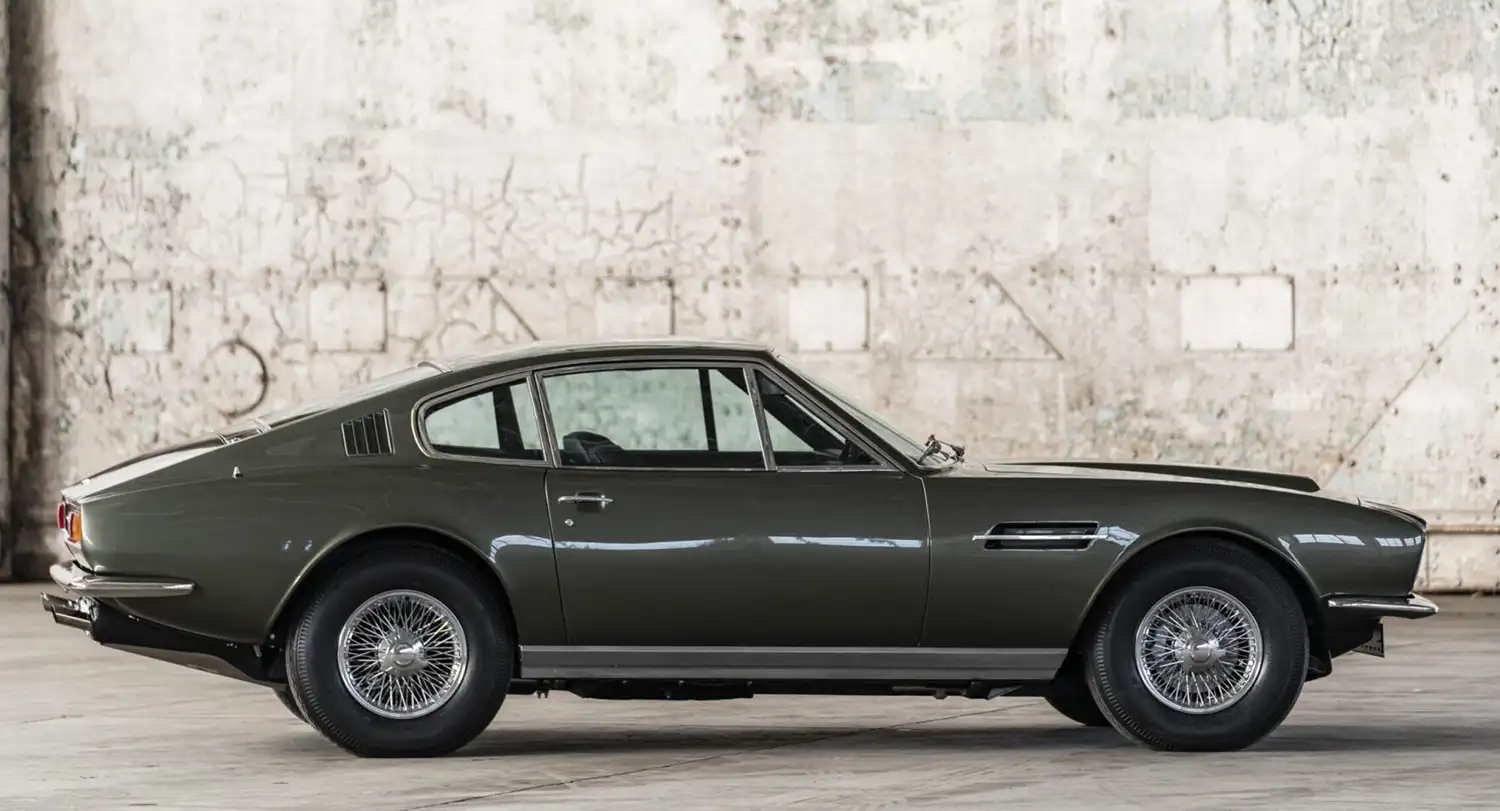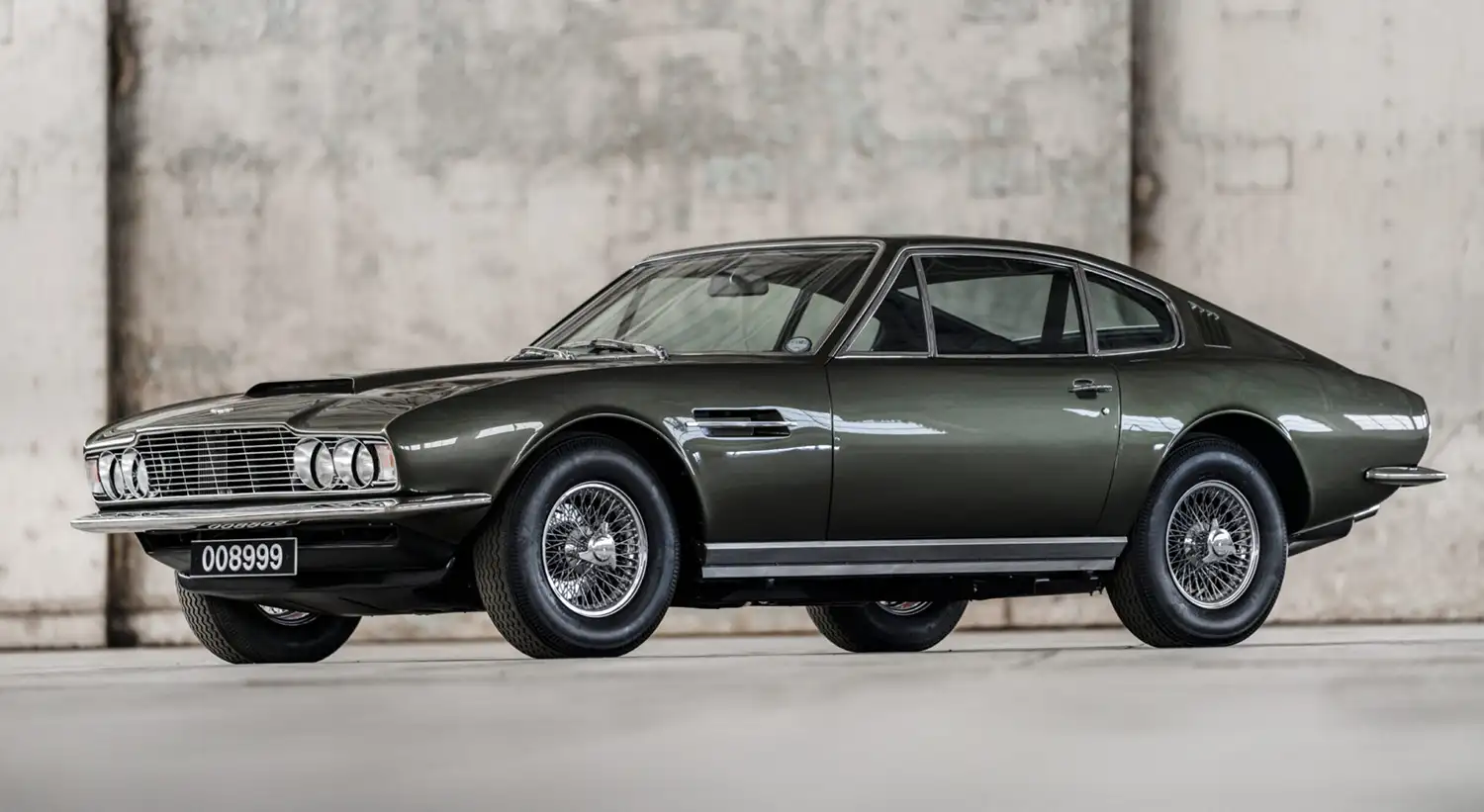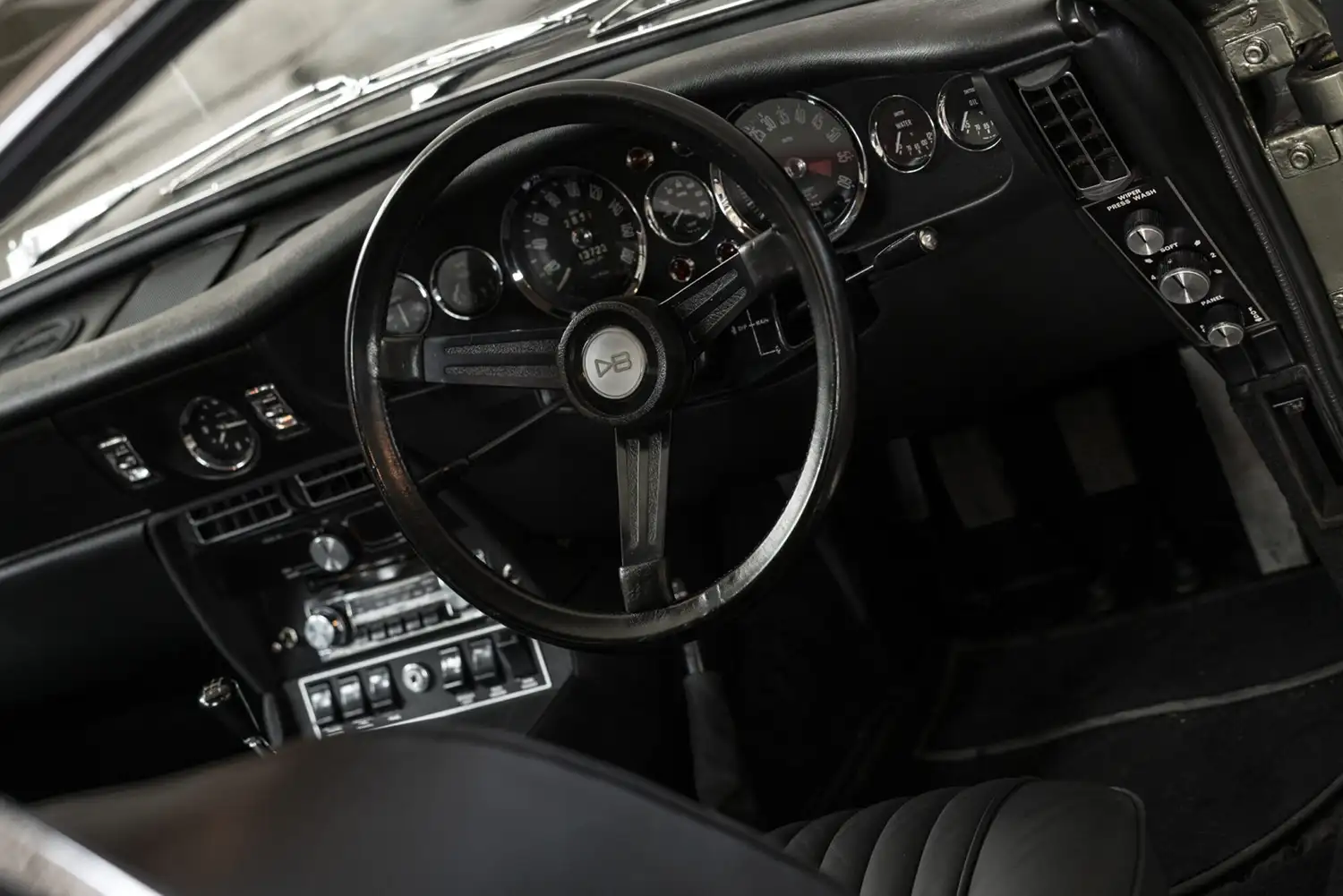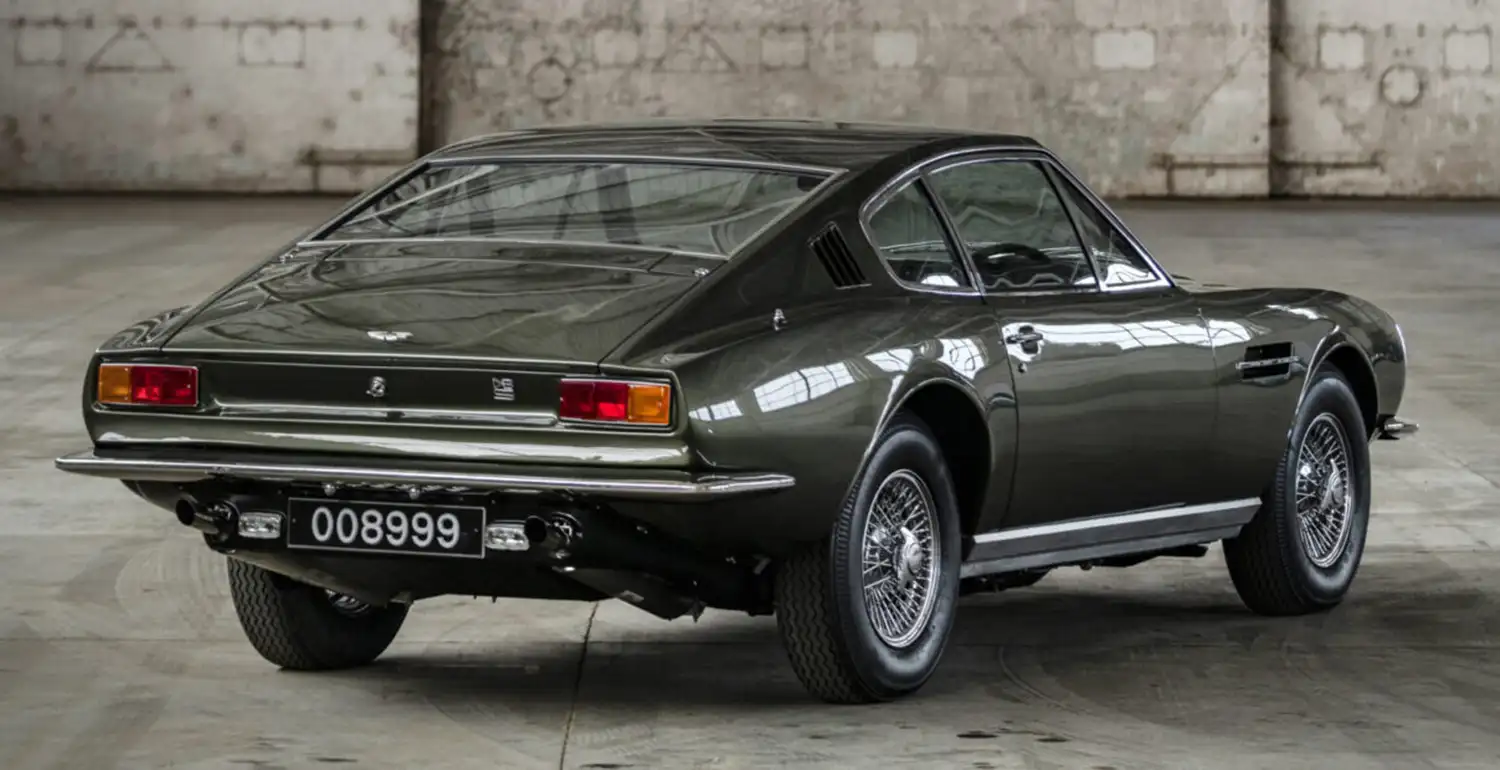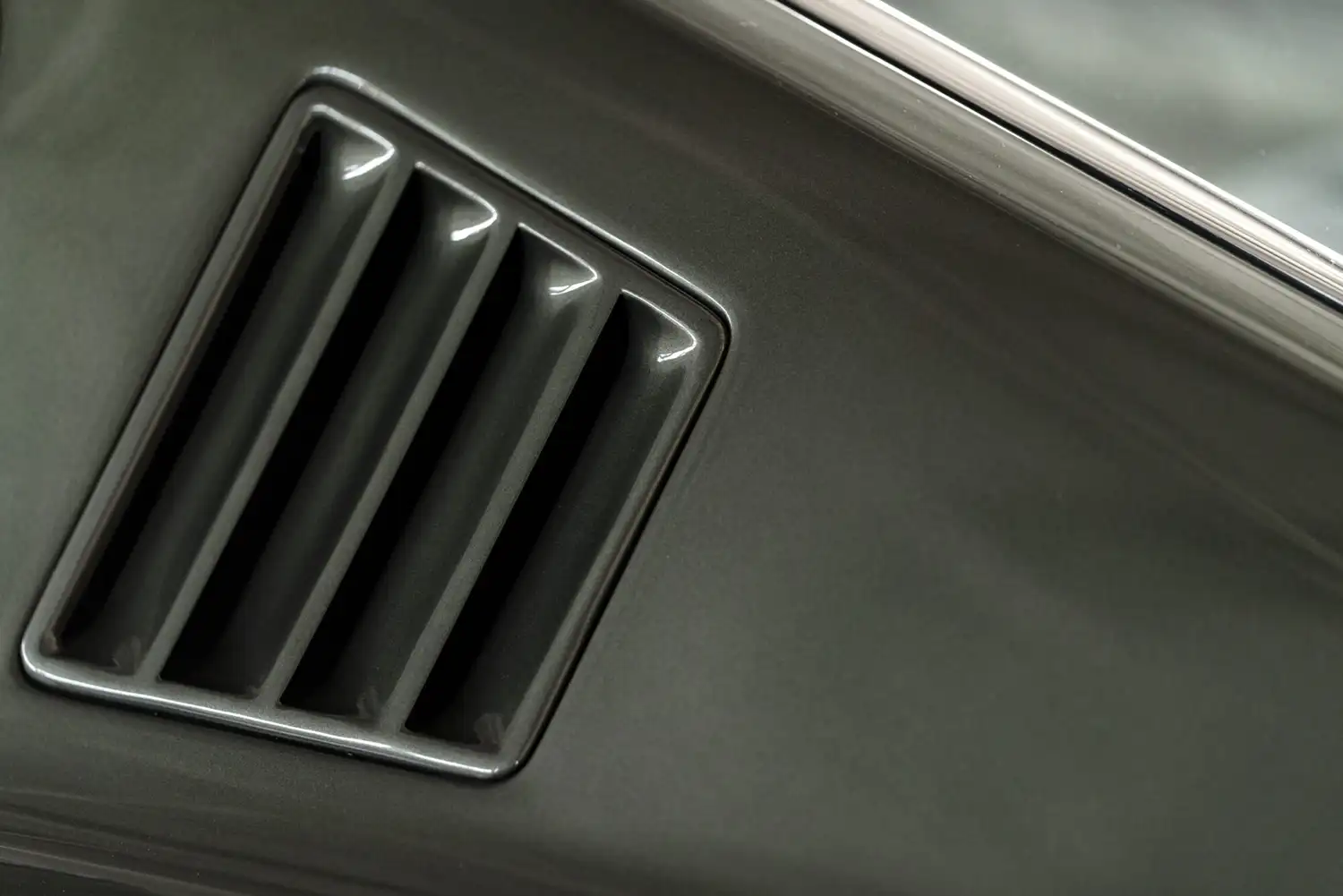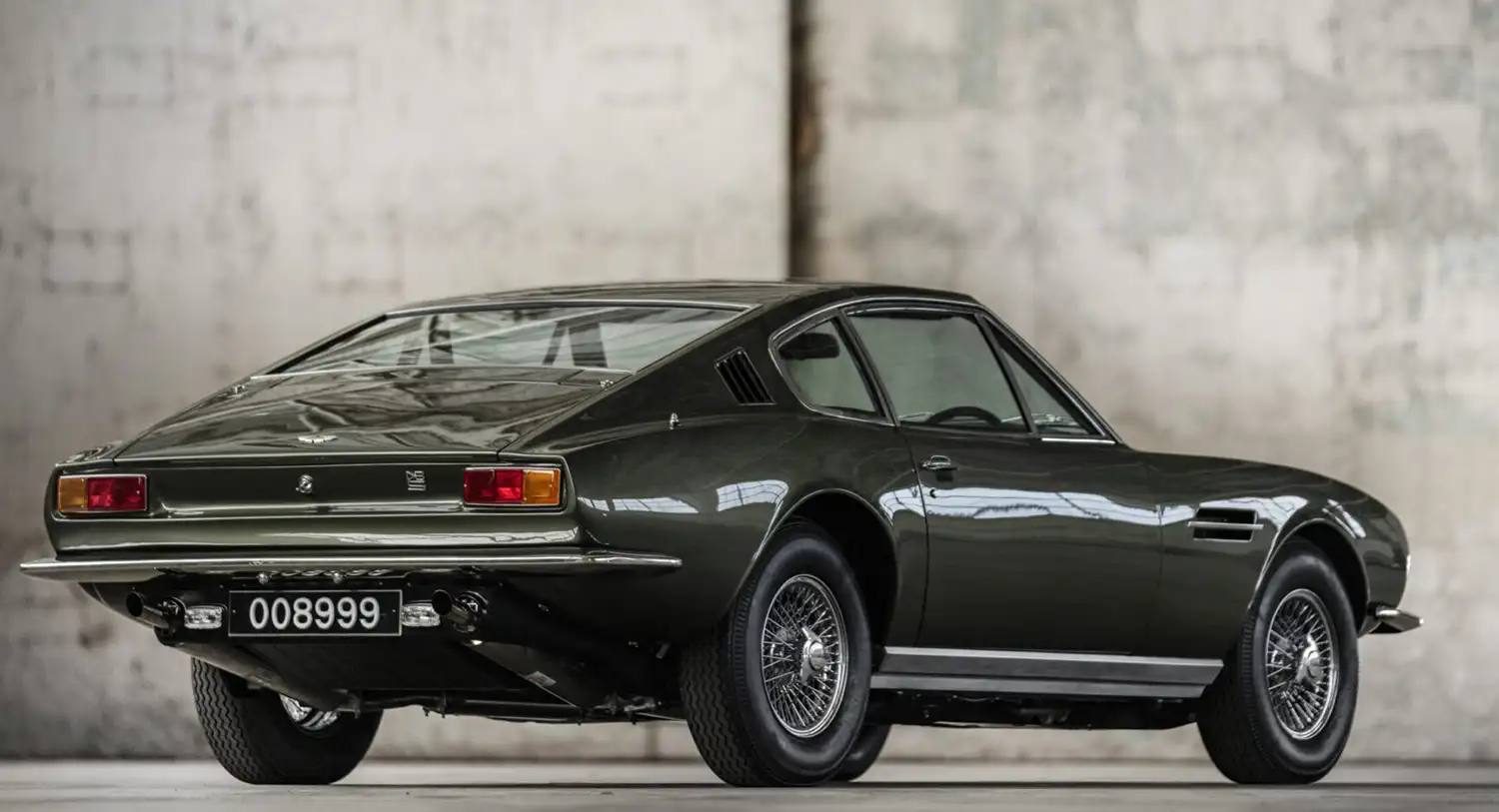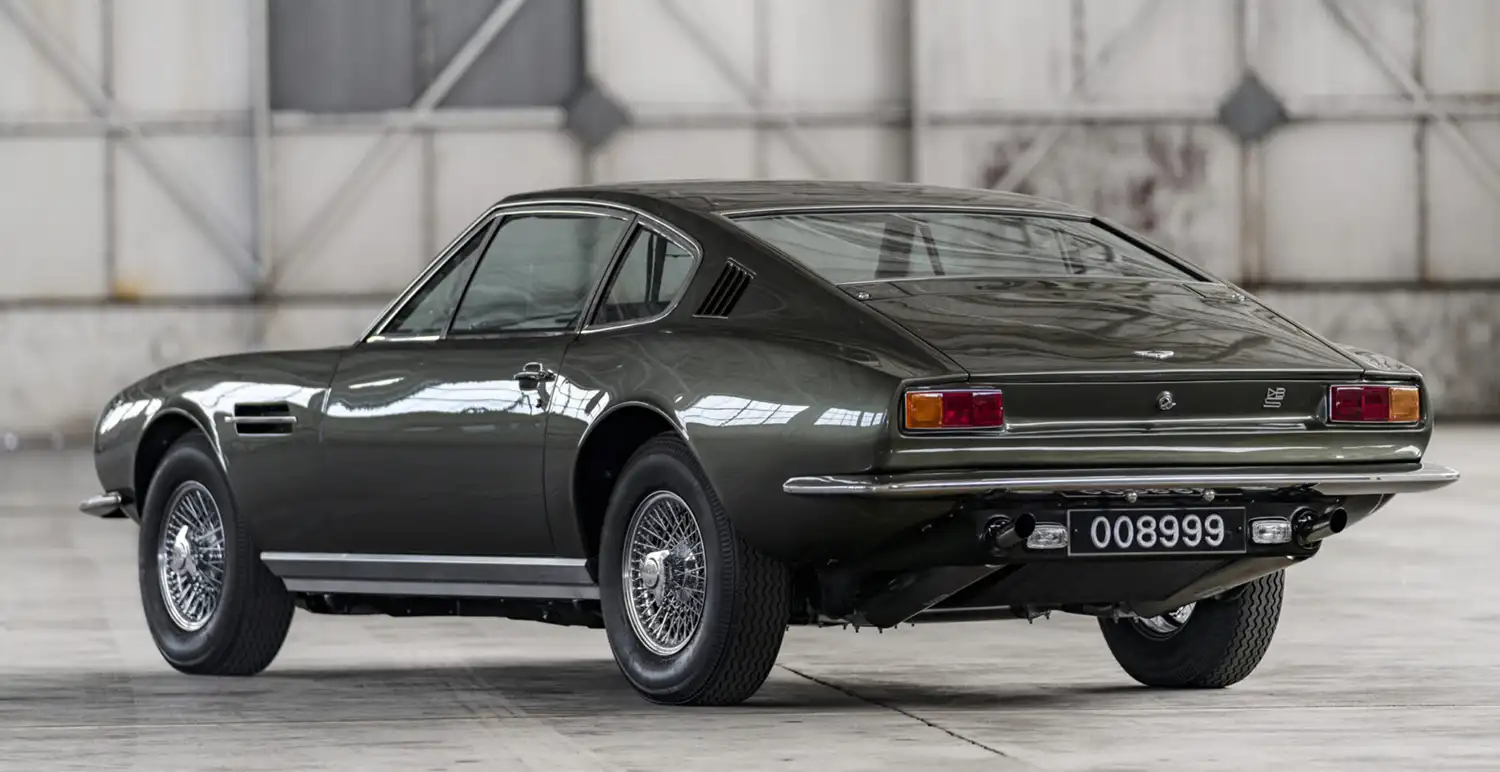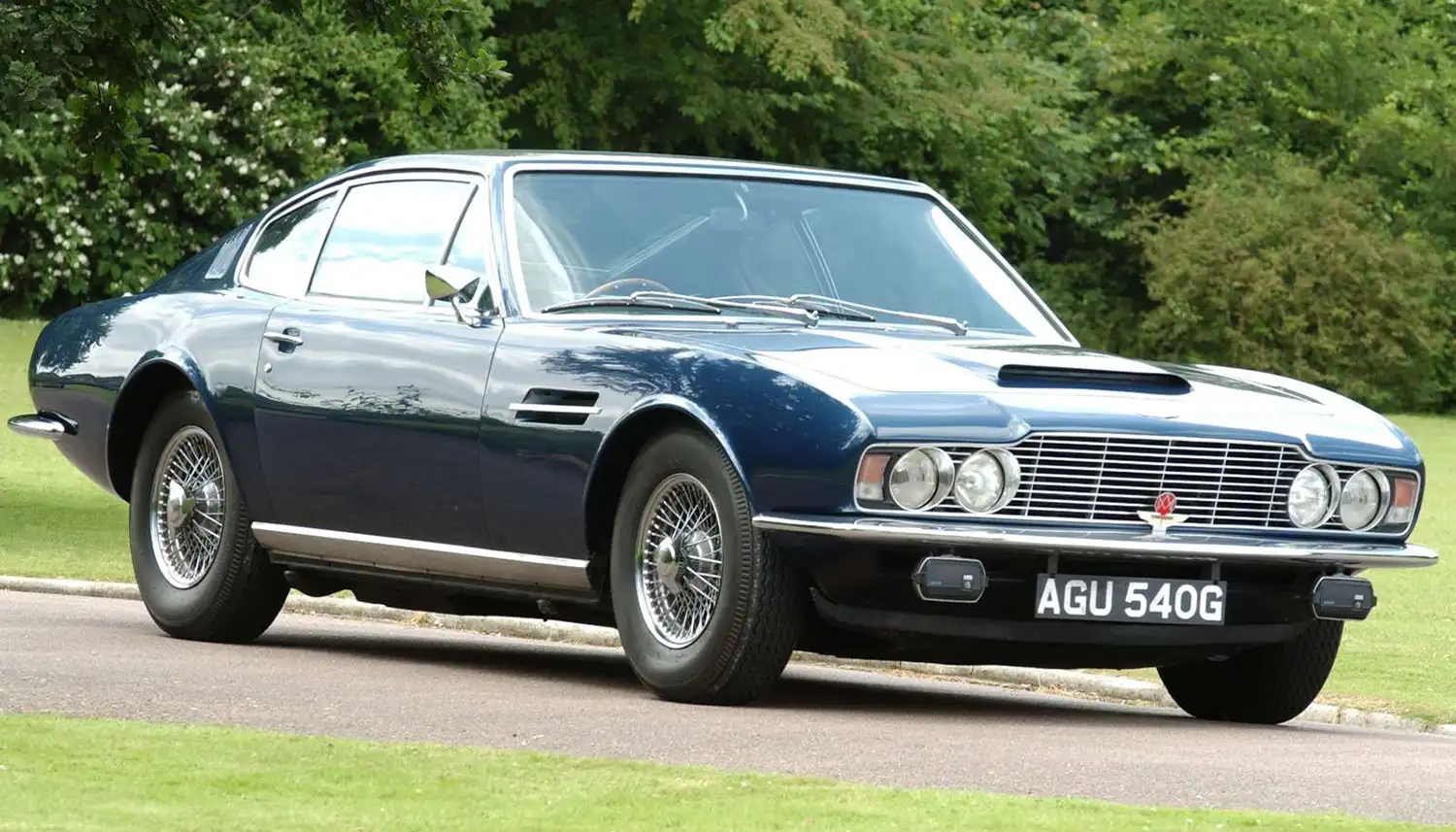
Though it was based on the rigid steel platform chassis of the DB6, the DBS was lower and wider than the car it replaced. However, it was actually shorter, despite a slightly longer wheelbase, due to the use of De Dion rear suspension. Styling was by the talented William Towns, whose work influenced Aston Martin for many years. A notable departure from the frontal appearance of previous models was an eye-catching fullwidth stainless steel grille incorporating quadruple quartz iodine headlamps. With individually sculptured rear seats, the DBS was marketed as a full four-seater.
The DBS was powered by the same 4-litre straight-six as the DB6, though its wide engine bay was obviously destined for a very different engine. It had been intended to be equipped from the start with a new V8 power unit, but this had suffered development problems. The delay meant that the carry-over DB6 unit had to be used on initial production cars. Inevitably, the greater frontal area and increased weight of the DBS compromised its straight-line performance, though the new rear suspension set-up gave it the upper hand on winding roads.
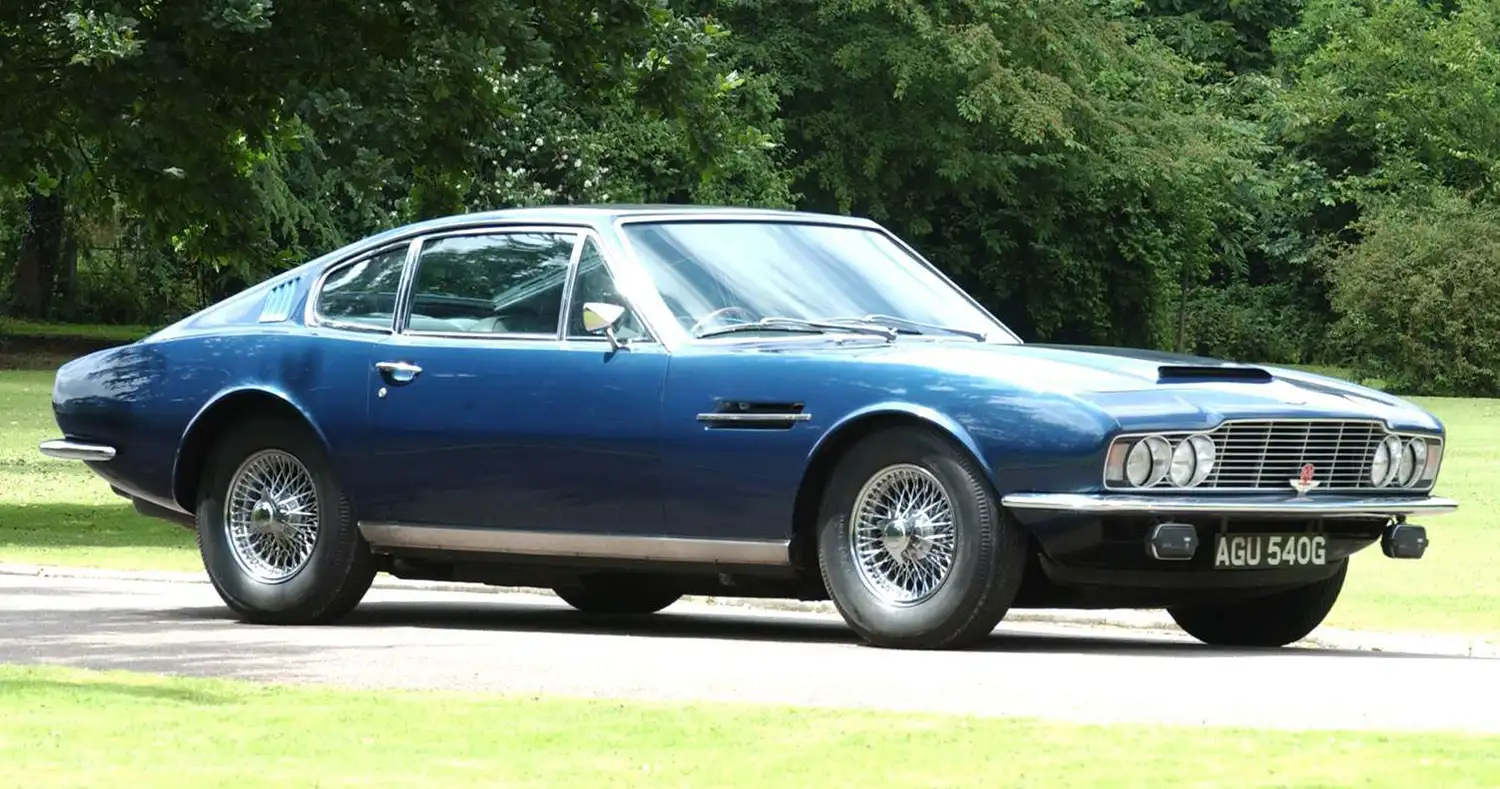
Aston Martin DBS
- Engine: Six cylinder, 3995cc
- Power: 282 bhp @ 5,500 rpm
- Top speed: 140 mph
- 0-60mph: 7.1 seconds
Aston Martin DBSV8 (April 1970 – May 1972):
- Engine: V8, 5340cc
- Power: 320bhp @ 5,000 rpm
- Top speed: 160 mph
- 0-60mph: 6.0 seconds
- Transmission: ZF five-speed manual gearbox or Borg Warner automatic transmission. Limited slip differential.
- Final drive ratio: 3.73:1 (manual) or 3:54:1 (automatic)
- Length: 458 cm
- Height: 133cm
- Width: 183 cm
- Wheelbase: 261 cm
- Kerb weight: 1,588 kg (1,727 kg for DBSV8)
- Price at launch: £4,473 (1967 – DBS) and £5,281 (1969 – DBSV8)
